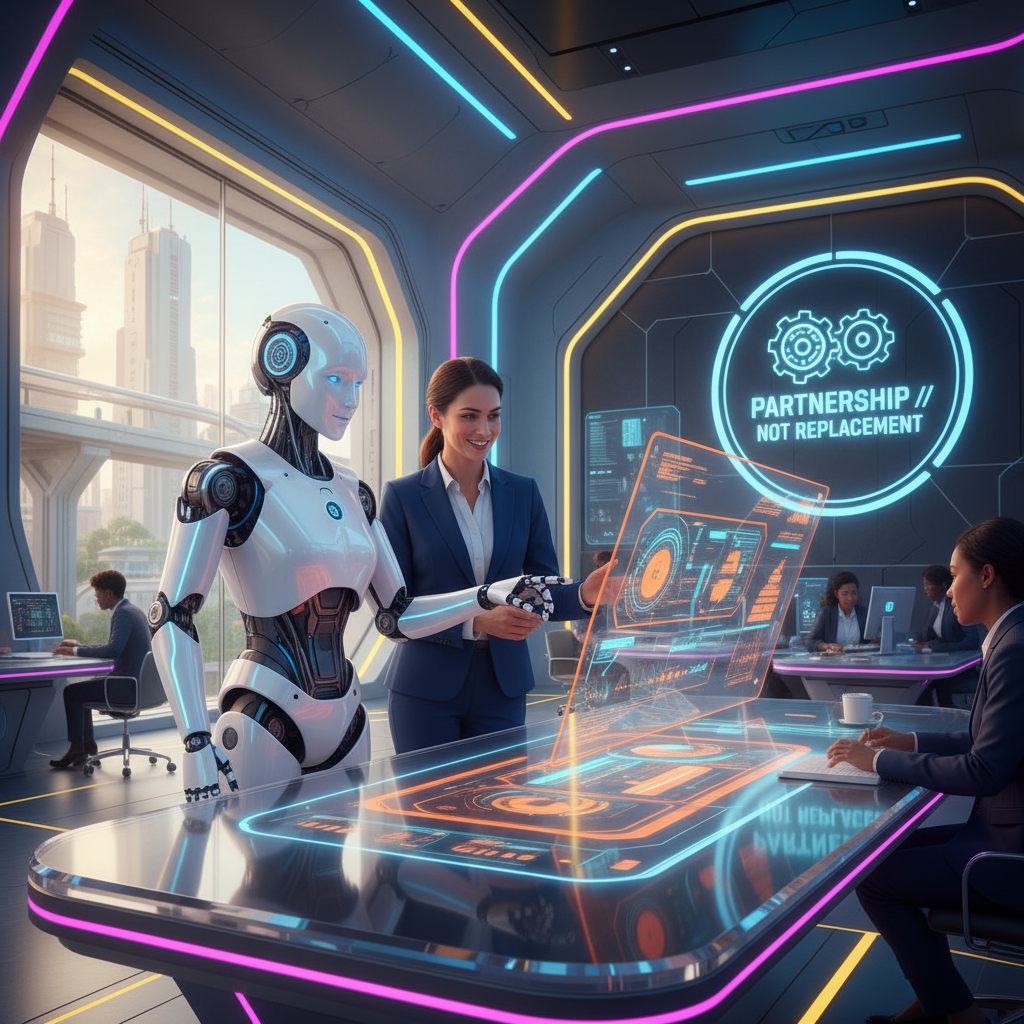5 Common AI Myths You Must Stop Believing (Experts Bust the Truth)

Artificial Intelligence (AI) is transforming life as we know it—from smarter business automation to personalized recommendations on our favorite apps. But as AI becomes mainstream, a growing swirl of myths and misconceptions clouds the facts. That’s why we’re setting the record straight today. In this post, you’ll discover the top five AI myths people still believe and how expert insights and real-life examples bust them.
Whether you’re a curious beginner, entrepreneur, or seasoned developer, understanding what’s **really true** about AI is your first step to confidently leveraging its power for progress.
Summary Table: Top 5 AI Myths vs. Reality
| AI Myth | Reality | Expert Source |
|---|---|---|
| AI will replace all human jobs | AI automates repetitive tasks, but human creativity & strategy are irreplaceable | JustCodify |
| AI understands the world like humans | AI detects patterns; lacks true consciousness, emotions, intuition | Beam.ai |
| AI is unbiased and infallible | AI can inherit real-world biases; human oversight is essential | JustCodify |
| AI is only for big tech companies | Startups and SMBs use affordable AI tools and SaaS platforms | BDO Insights |
| AI is set-it-and-forget-it | AI needs regular monitoring, updating, retraining, and human review | JustCodify |
Myth 1: AI Will Replace All Jobs
Hollywood blockbusters love to show robots marching in, taking over our workplaces. But in real life, AI is much more nuanced. Today’s AI tech automates repetitive processes—think sorting emails, scheduling meetings—freeing up people to focus on creative, strategic, and hands-on tasks. No credible expert says every job will vanish. Instead, roles evolve.
- AI automation transforms boring chores, not entire industries
- Demand for creative thinkers and AI supervisors is rising
- Upskilling helps workers transition alongside technology
Want proof? The World Economic Forum estimates AI will create 97 million new jobs by 2025, especially in fields that require human oversight, design, and ethics. Source
Myth 2: AI Understands the World Like Humans
AI is impressive, but it doesn’t “think” like a person. At the root, AI uses complex pattern recognition and training data to make predictions. It cannot comprehend meaning, context, or feel emotions. Chatbots, for example, respond based on probability—not genuine understanding.
- No AI system has self-awareness or intuition
- AI responds to queries—doesn’t grasp deep intent or emotional nuance
- Human-first leadership keeps decisions ethical, relatable
If users expect true understanding, disappointment is inevitable. Treat AI as a tool—not a sentient colleague. Source
Myth 3: AI Is Unbiased & Infallible
Data-driven doesn’t always mean “fair.” AI models learn from the datasets we feed them, but if those datasets contain bias, the outcomes can do the same—sometimes worse. That’s why there are notorious examples of AI systems producing discriminatory results.
- Bias in training data can seep into AI outputs
- Continuous human oversight is required
- Ethical frameworks are key for trustworthy AI
The best AI leaders test, audit, and retrain their models regularly and transparently to minimize error. Source
Myth 4: AI Is Only for Big Tech
AI adoption isn’t exclusive to trillion-dollar tech companies. Thanks to open-source platforms and SaaS tools, even small businesses and individual creators now harness AI for operations, marketing, and customer service. The democratization of AI widens its impact and fuels startup innovation.
- Accessible AI platforms are available for SMBs and entrepreneurs
- Cloud-based solutions lower entry barriers
- Nonprofits and educators use AI for real-world problem solving
Today, it’s not about size—it’s about strategy. With the right platform, anyone can unlock AI’s potential. BDO Insights
Myth 5: AI Is a Set-It-and-Forget-It Tool

AI is not a “fire and forget” solution. The digital environment and user behavior continually shift, so AI models must be routinely retrained, monitored, and adapted. Regular updates ensure accuracy and handle data drift, preventing models from making outdated or inaccurate predictions.
- Ongoing monitoring and human intervention required
- AI should evolve alongside new business goals & data
- Human judgment is always the final call
Staying up-to-date keeps your AI relevant, responsible, and genuinely helpful—not a lurking liability. Source
Comparison: AI in Practice vs. Popular Myths
| Popular Myth | What Really Happens |
|---|---|
| AI will eliminate all jobs | AI redefines roles and produces new opportunities (e.g., AI trainers, ethics officers) |
| AI decisions are always correct | Human auditors oversee results for accuracy and fairness |
| AI is too complex for small teams | Open-source AI platforms are beginner-friendly and customizable |
| AI cannot be trusted for sensitive data | Modern platforms comply with privacy laws and employ encryption |
Real-World Case Studies: AI Myths in Action
Case Study 1: Juniper Networks—Responsible AI for Finance

When Juniper Networks implemented generative AI tools in their finance department, early concerns included job displacement and security risks. Instead of firing staff, Juniper upskilled their team and assigned them to oversee, audit, and fine-tune AI models, yielding improved accuracy and compliance. Explore more: Finance GenAI: A Practical Case Study
Case Study 2: AI for SMBs—Marketing Automation Success

A small digital agency adopted a low-cost SaaS AI platform for customer segmentation and ad targeting. The result wasn’t job loss, but an increase in efficiency and happier clients. The agency owner emphasized a blend of AI automation and personal creative strategy. Resource: BDO Insights
Case Study 3: Bias Discovered in Hiring Algorithms
A multinational firm deployed an AI system for resume screening, only to find the algorithm favored certain universities over others—perpetuating old biases. After an ethical review, the company revised its model and added human auditors to oversee decisions. More on real-world bias: Beam.ai





Comments
Post a Comment